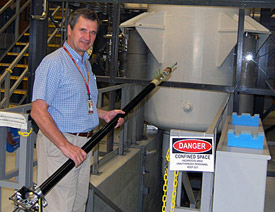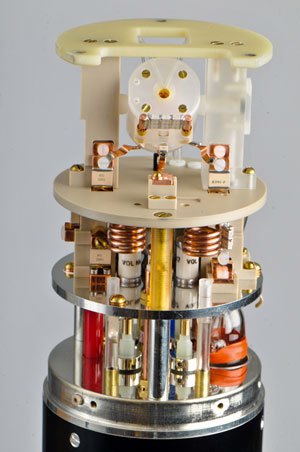
MagLab scientist Victor Schepkin prepares to insert a probe in the 900 MHz NMR magnet.
The scientists who want to use the magnetic fields have to get their sample and their entire experiment down deep inside the magnet. The magnet itself is a coil, which means there's an open space that comes down from the top into the center of the magnet and then continues out through the bottom of the magnet (known as the magnet's bore). So the experimentalists have that space in which they can put their experiment. That space can be quite small – even a half-inch diameter for our most powerful pulsed magnets.
So the scientists put their experiments on the end of a long stick. And that long stick we call a probe. And we have different probes for different types of experiments. If we want to understand if the material is a metal or an insulator, that probe will have wires on it. If we want to understand how it reflects light, then that probe might very well have mirrors on it, as well. Often the probes have a thermometer at the bottom, so we know what temperature the sample is. Probe really just means, "stick on which you put the sample," but probe sounds more scientific!



